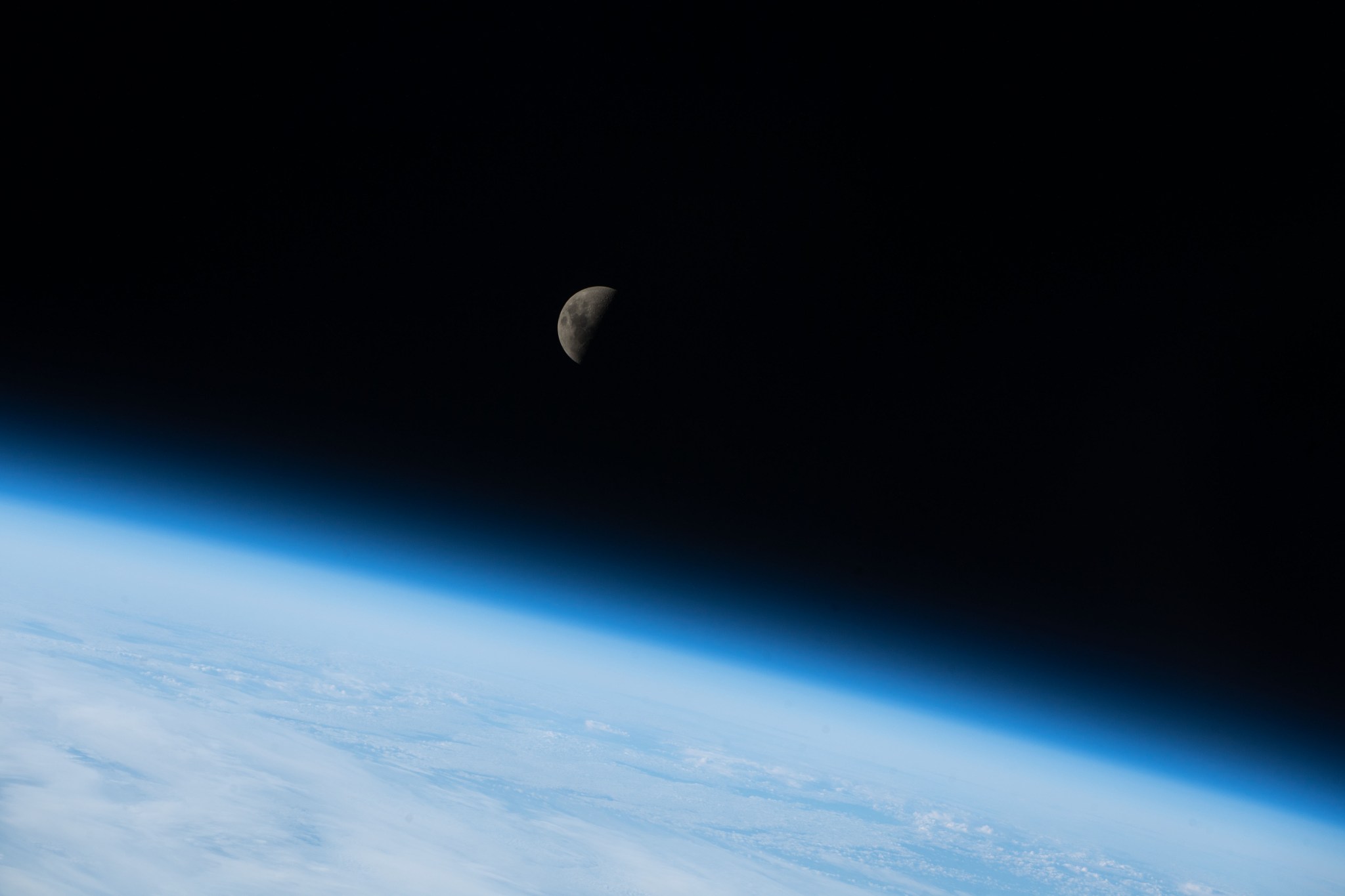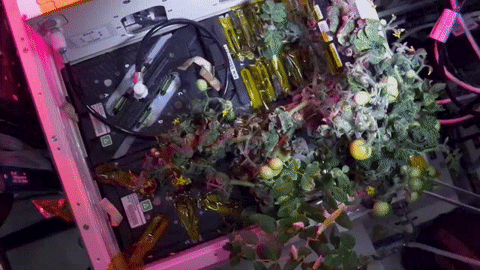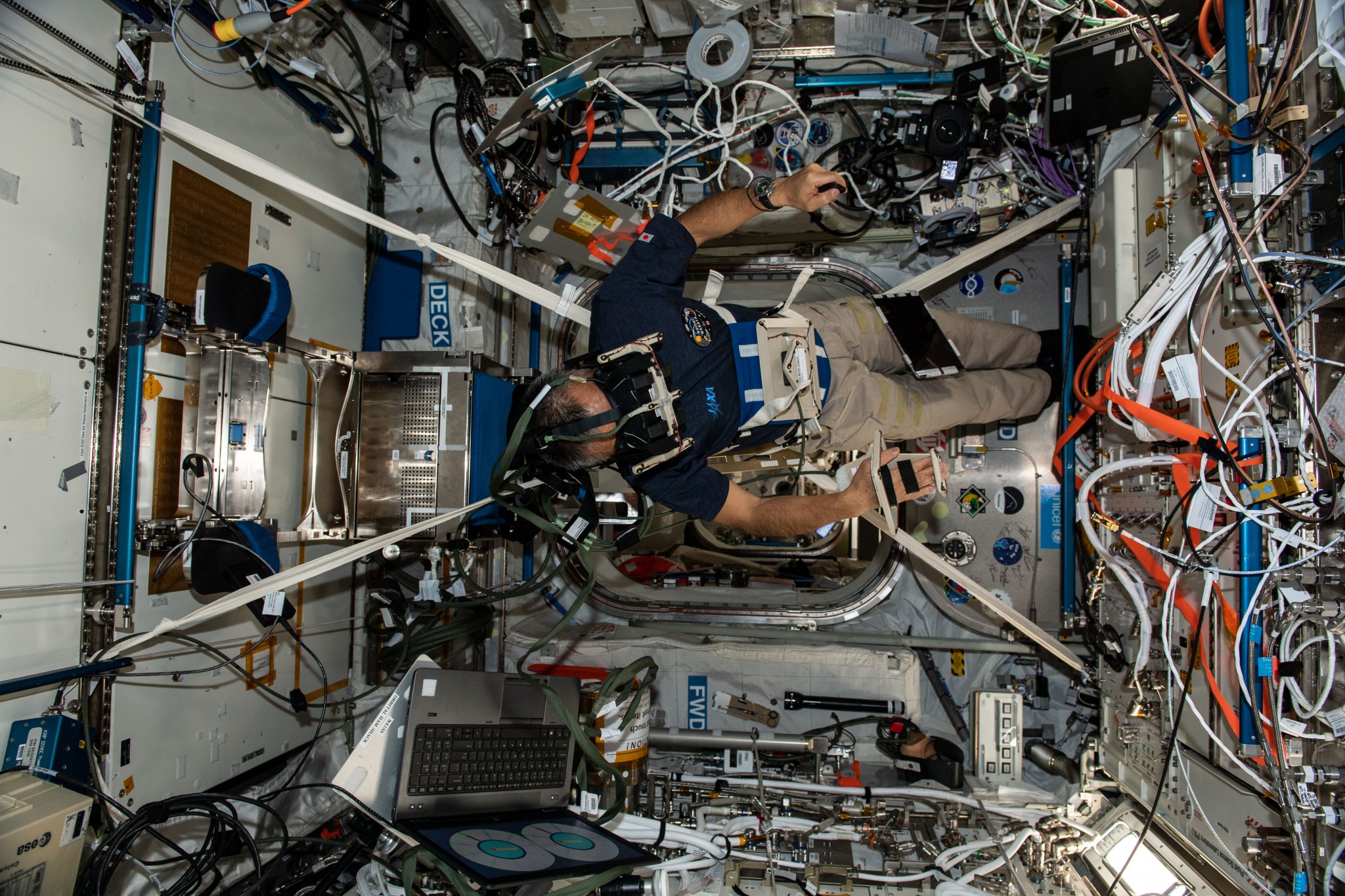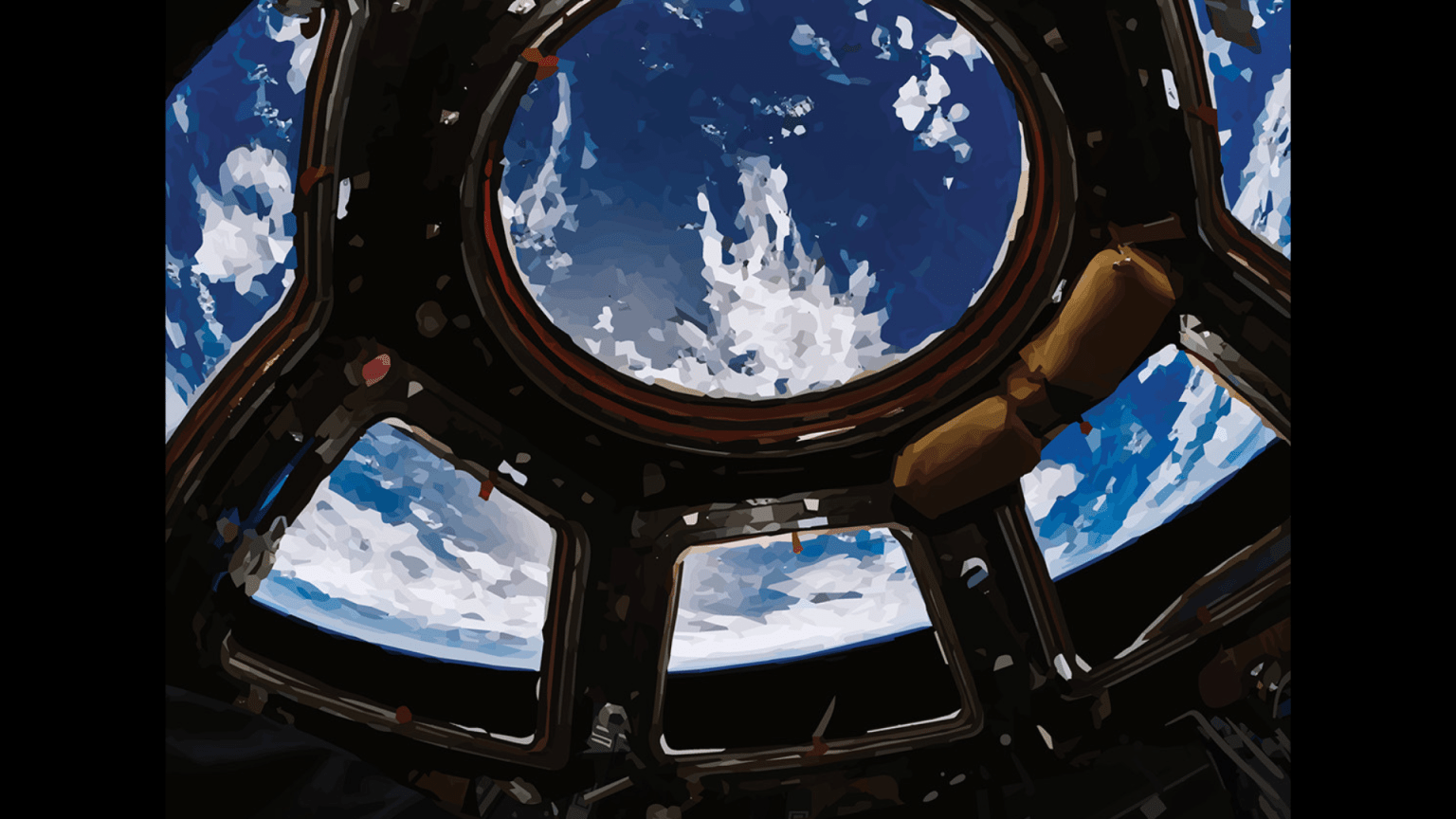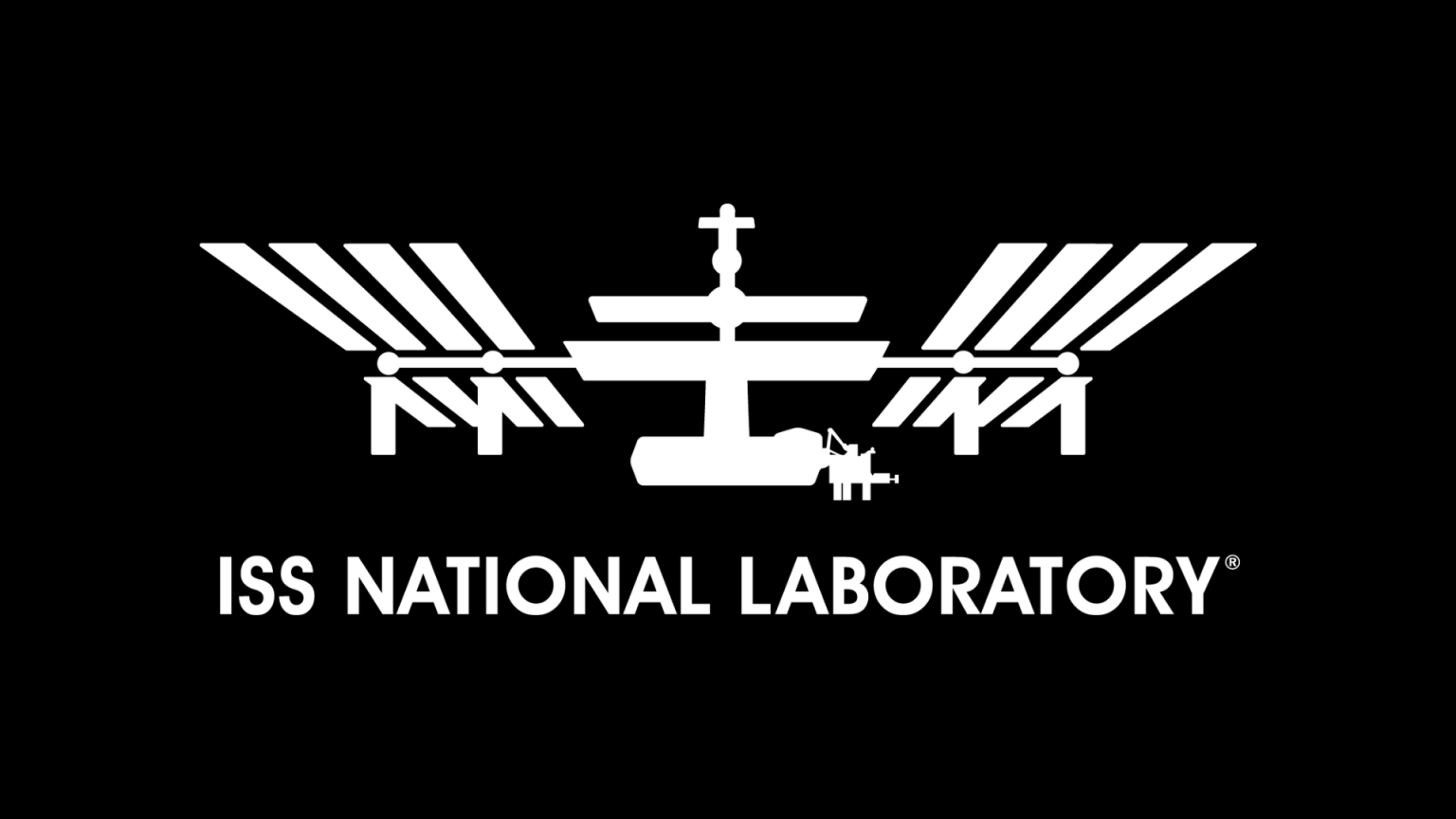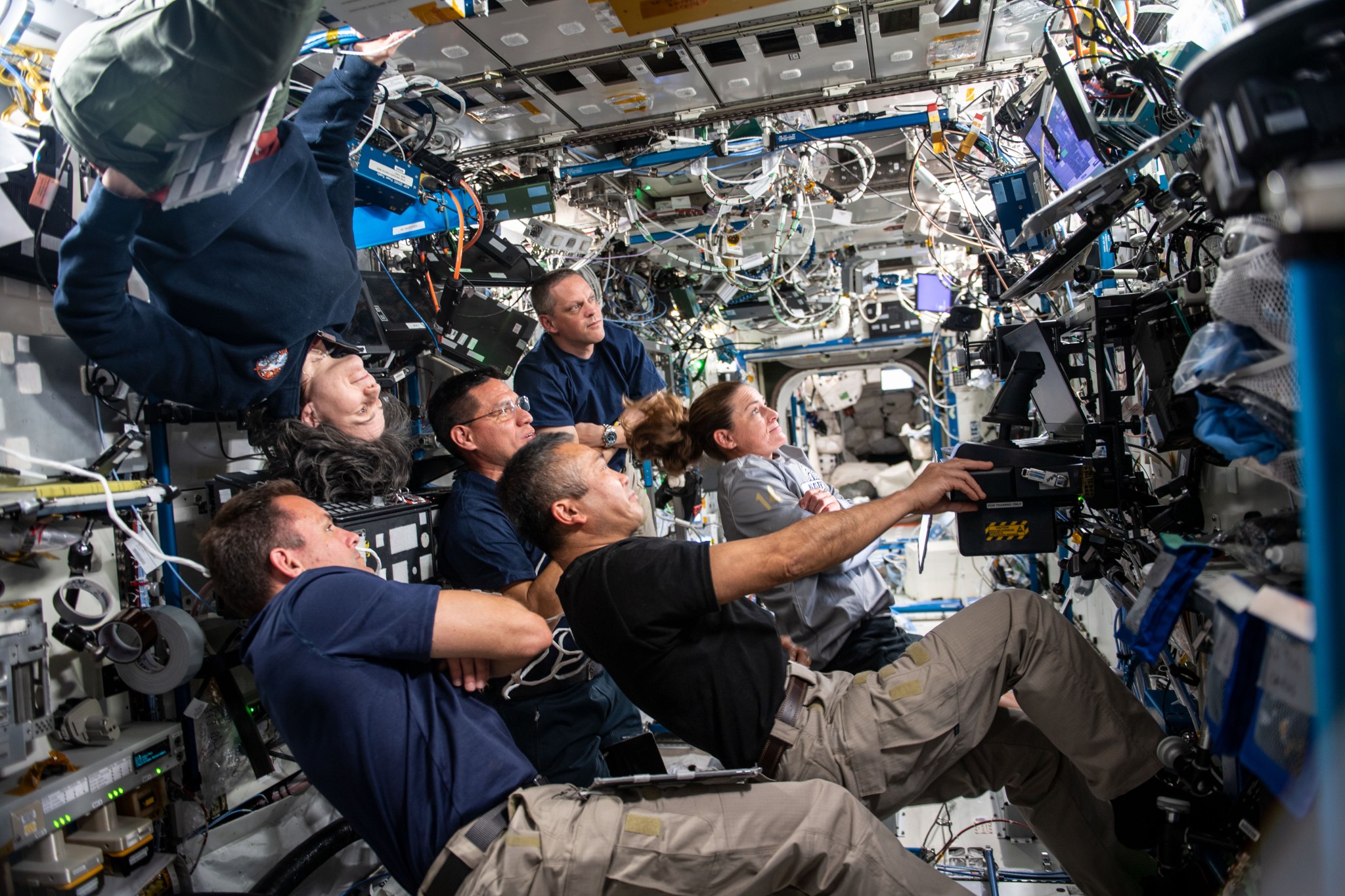
Crew members aboard the International Space Station conducted scientific investigations during the week of Oct. 17 that included testing new techniques for growing plants in space, examining how an enhanced diet may affect adaptation to microgravity, and assessing a fiber optic dosimeter for measuring radiation inside the space station.
Here are details on some of the microgravity investigations currently taking place aboard the orbiting lab:
New ways to grow plants
The XROOTS investigation uses the Veggie facility to test hydroponic (liquid-based) and aeroponic (air-based) techniques to grow plants without soil or other traditional growth media. Current space-based plant systems are small and use particulate media-based water and nutrient delivery systems, which do not scale well in a space environment and can have maintenance and sanitation issues. Hydroponic and aeroponic techniques could provide an alternative that enables production of crops on a larger scale for future space exploration. In addition, components developed for this investigation could enhance cultivation of plants in terrestrial settings such as greenhouses, contributing to better food security for people on Earth. This investigation is just one example of ongoing research to grow plants in orbit and prepare for living on other planets. During the week, crew members performed fluid management and inspected seed cartridges and plants.
Toward a better space diet
Food Physiology characterizes the effects of an enhanced spaceflight diet on immune function, the gut microbiome, and nutritional status indicators. Diet can be easily and meaningfully altered on Earth or during flight and documenting the effect of dietary improvements on human physiology could provide guidance for using diet to enhance adaptation to spaceflight. Few human studies document simultaneous changes in multiple physiological systems related to diet, in part due to the complexity and difficulty in accurately monitoring dietary intake over prolonged periods.
This investigation could contribute to understanding how complex organisms adapt to spaceflight, and results may support developing targeted, efficient dietary interventions to maintain crew health and performance along with food system requirements to support these interventions. Insights and analyses from this study could have significant scientific and medical applications for people on Earth as well. Crew members conducted diet briefs with investigators during the week.
Monitoring radiation with optical fibers
Lumina, an investigation from ESA (European Space Agency), monitors the radiation dose inside the space station using a dosimeter with optical fibers that darken when exposed to radiation. The dosimeter could provide reliable, real-time dose measurements in complex radiation environments, a key capability needed for future space exploration. An embedded fiber-based dosimeter that provides real-time measurement of fluctuations in levels of ionizing radiation also could provide the ability to anticipate and react appropriately to potentially dangerous radiation flares. Fiber-based dosimeters show promise for use in the medical and nuclear industries on Earth. During the week, crew members transferred collected data to the ground via a dedicated app.
Other investigations involving the crew:
- The human brain can self-regulate blood flow even when the heart and blood vessels cannot maintain an ideal blood pressure. Cerebral Autoregulation, a Japan Aerospace Exploration Agency (JAXA) investigation, tests whether this self-regulation improves in microgravity. The investigation could improve understanding of blood flow changes and support countermeasures for space-related lightheadedness and people on Earth affected by fainting episodes known as syncope.
- GRASP, an ESA investigation, examines the effect of microgravity on coordination of the hand and visual environment to control reaching for and grasping an object. Results could help researchers evaluate how the brain adapts to microgravity and inform the development of better systems and procedures for living in space.
- ESA’s GRIP investigation studies how microgravity affects a person’s ability to regulate the force of their grip and trajectory of upper limbs when manipulating objects. Data could identify potential hazards for astronauts as they move between gravitational environments and contribute to the design of systems for controlling rovers, robots, and other exploration tools.
- Wireless Compose-2, an investigation from ESA, demonstrates an infrastructure for wireless transmission of data and a smart shirt for measuring forces generated by the heart as it moves blood. This technology could help monitor the health of astronauts on future missions and people on Earth.
- Standard Measures collects a set of core measurements, including data on behavioral health and performance, cellular profiles and immunology, the microbiome, biochemistry markers, sensorimotor changes, and cardiovascular health. These data help researchers characterize adaptive responses to living and working in space and monitor the effectiveness of countermeasures.
- ISS Ham Radio sessions engage students, teachers, parents, and other members of the community in direct communication with astronauts via ground-based amateur radio units. This experience helps inspire interest in science, technology, engineering, and math.
John Love, ISS Research Planning Integration Scientist
Expedition 68




























